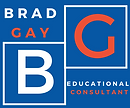There maybe a tendency to look at these models and think due to their naming that structured is a little too prescriptive and that we should be aiming at the free end. This is not my intention. Sometimes where there

is a whole school identified need fully structured is the way to go. It depends on each schools unique needs. What I hope is that this enables Principals a degree of autonomy to structure TAI to the needs of their school.
Structured: Teachers follow the lead of the Principal (or senior management) as the entire staff engages in one inquiry together. At the Structured end of the Teaching As Inquiry (TAI) process, the Principal has complete control of the essential question or targeted intervention, the resources teachers will use to create understanding, specific learning evidence teachers will use to document their learning, and the performance tasks teachers will complete as a demonstration of their understanding.This is often a good place to start with TAI as everyone is on the same page. Meeting the Standards of the Teaching Profession is clear cut and often reached collaboratively as a staff. It also has all staff members engaged around the same topic.
Controlled: The Principal chooses topics and identifies the resources teachers will use to answer the perceived needs of the school. In the Controlled section of the TAI, the Principal provides several essential areas for improvement for teachers to unpack, usually related to the annual goals. Teachers deepen their understanding through several research based resources the Principal has predetermined to provide valuable context and rich meaning to the essential improvement areas. Teachers demonstrate their learning and development by choosing a common performance goal and collaboratively reflecting on it. They may choose more than one goal throughout the year.
Guided: The Principal chooses areas of need based on data and perceived need, and teachers design the solution. In the Guided section of the TAI, the Principal further empowers teacher agency by providing a single (or selection of) essential questions or goals for teachers to inquire into, and the teacher selects where to search for answers and how they will demonstrate understanding and show professional development.

Free: Teachers choose their learning goals without reference to any prescribed outcome. In the TAI area—with the support and facilitation of the Principal, teachers construct their own essential inquiry goals, question, research a wide array of resources, customise their learning evidence, and design their own performance task to show impact on learning and personal development. Many Principals and staff recognise the benefit of running two TAIs. One may be school-wide or structured the other may be more towards the free end of the spectrum. They believe this gives Teachers some agency over their professional development and enables them to pursue their strengths or perceived areas of need. The two together can become the basis of a very robust appraisal system based on teacher professional development. Where the structured TAI may well be based around whole school or team collaboration, the sharing of the free end of the TAI may be based on a teacher/mentor model or paired/peer arrangement. Done vertically across a school it can the paired arrangement can give teachers better insight into their colleagues operating at different ends of the school.

